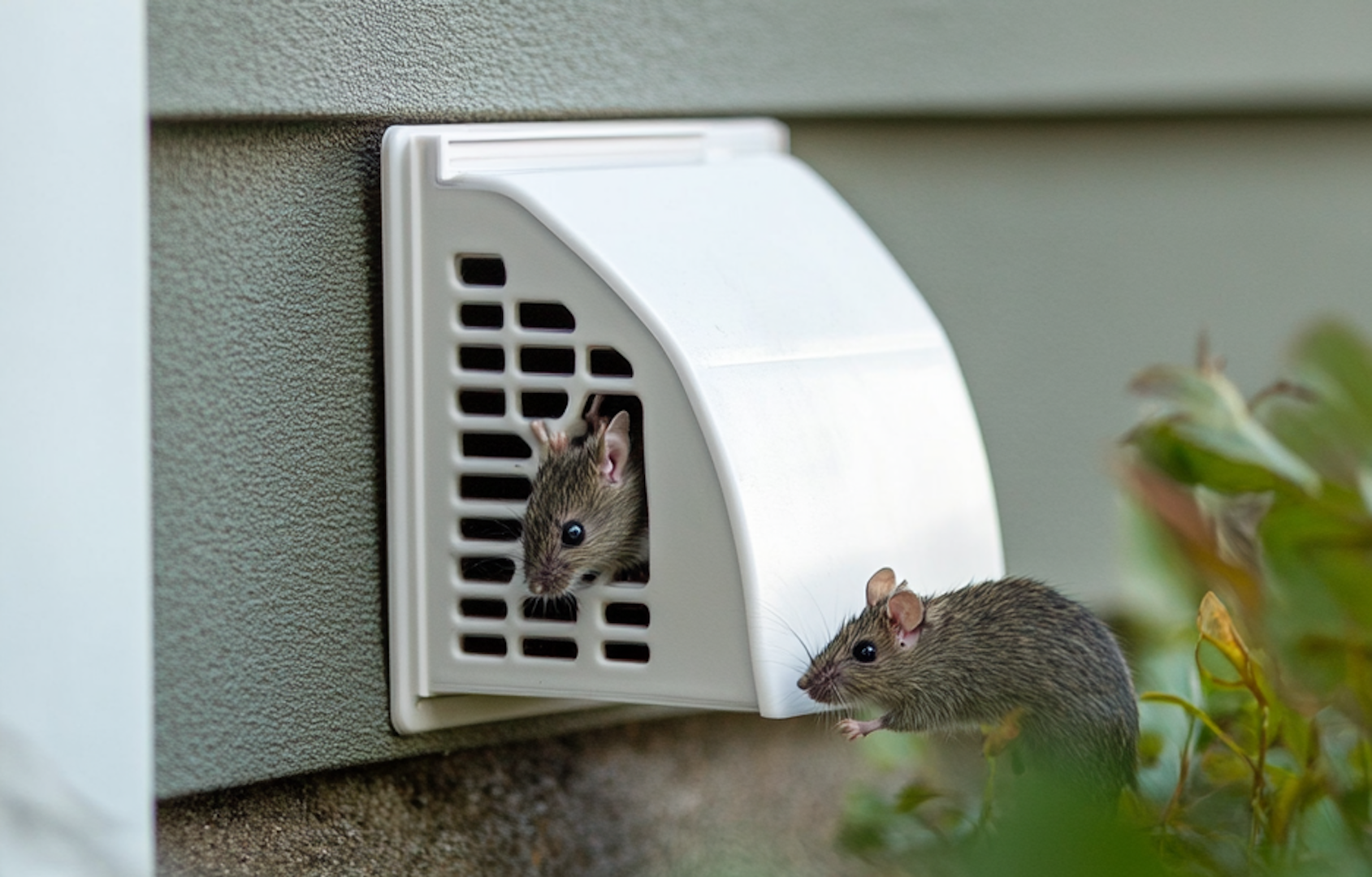Part of homeownership is maintaining the exterior of your property and its landscaping to preserve its beauty and value.
Another benefit of landscaping and keeping the outside of your home clean is that it acts as a deterrent for pests.
Nevertheless, seasonal pests are practically unavoidable in Pennsylvania, whether it’s mosquitoes found in Southeast Pennsylvania during the summers, ticks found in the forests of the Lehigh Valley, or termites that hide out in softwood trees in Northeastern Pennsylvania.
Additional exterior pest control solutions, including yard sprays for ticks, inspections, and motion-sensory lights, may be required on larger or rural properties in the state.
Our expert technicians at The Pest Rangers have outlined their top nine exterior pest control solutions that are the most effective at keeping pests away from your property and out of your home this year.

Is Exterior Pest Control Worth It?
Every indoor pest, whether it’s ants, rodents, cockroaches, or termites, has to come from outside. Therefore, stopping pests at the source and preventing them from even entering your property will help keep them out of your home.
By investing in exterior pest control, you can save money on future services, such as fumigating or treating your home for nasty, invasive pests.
Exterior pest control combines practical landscaping tips with general housekeeping procedures to help prevent pests, both outdoors and indoors.
In the warm, subtropical climate of Pennsylvania, outdoor bugs, like ticks, mosquitoes, and fleas, are extremely common and can carry dangerous diseases. Exterior pest control can help protect your health and peace of mind, especially if you enjoy spending time outdoors in your yard.
9 Outdoor Pest Control Solutions to Prevent Pests from Coming Inside
Our seasoned technicians have outlined nine of the best tips they recommend to customers to help combat common outdoor pests in the region and prevent them from entering your home.
1. Know Your Enemy: Identify Seasonal Common Pests in Pennsylvania
While various pests like ants and spiders are common to all properties, there may be something about your property that is uniquely attractive to certain pests.
For example, termites are attracted to soft, rotted wood, so if you have lots of old trees, branches, or logs lying around your property, you could be a prime target for wood-destroying organisms.
Likewise, mosquitoes tend to congregate around properties with large pools of standing water, including retention ponds, shallow streams, pools, and bird baths.
By identifying the types of insects or pests common to your area, you can take proactive measures to prevent them from entering your property.
2. Seal All Entryways
A simple way to keep pests out is to simply prevent them from entering. Take care of your home’s yearly maintenance and make sure there are no openings for any creatures to slip through.
This could be cracks in your foundation, torn window screens, cracks beneath your doors, or even vents that lead outside. Remember, some insects are smaller than the head of a pen, which means they can easily find their way inside through the smallest crack.
Likewise, you can reinforce your home’s exterior defenses by patching holes in your fence.
Any of these areas has the potential to let unwanted creatures inside. The best tools for patching holes in your exterior include caulk, spray foam, weatherstripping, or good old-fashioned plywood.
3. Tend Your Garden
Another simple way to keep your home pest-free is to tend to your garden. Insects, particularly ticks and mosquitoes, are drawn to overgrown shrubs and gardens, where they can find shelter and protection. Rodents and cockroaches also like to nest in thickets or cluttered areas.
Take care of vines or overgrown areas, monitor bush and hedge growth, and don’t let your weeds grow unchecked.
Rule of thumb: the wilder and more untamed your yard becomes, the more enticing it can be for unwanted houseguests.
4. Keep the Grass Cut
Much like your garden, an overgrown lawn can be a draw for unwanted visitors. Ticks, especially, prefer long grass, as it makes it easier for them to latch onto a host successfully.
You can also attract ants, fleas, and some stinging insects who may decide to build a nest in the growth. Don’t give your lawn a chance to host any of these pesky pests. Be sure to mow your lawn regularly, as this will disturb the habitat or any insects on your property, and dispose of any grass clippings.
5. Clean up the Garbage
Do you have unsealed garbage cans with exposed trash bags hanging out? You may be attracting more than just wildlife–you may also be attracting rodents and cockroaches.
All it takes is one cockroach or ant to make the leap from your outside trash to your inside trash to launch a full infestation of your home.
Trash isn’t limited to food either. Clutter, in general, can provide a perfect hideout for many pests.
An overburdened garage or shed can mean hidden snakes or spiders, while a pile of wood can attract termites or other pests. The goal of this exterior pest control is not to leave anything that could attract potential invaders, so do your best to keep your property tidy.
6. Watch for Stagnant Pools of Water
Cleaning out gutters is not just good for your home’s foundation; it can also help avoid pests like mosquitoes, ants, and cockroaches.
Standing water provides the perfect breeding ground for mosquitoes, which can carry diseases and make summer barbecues a nightmare.
Look for common sources of standing water, including birdbaths, overturned lawn chairs, poorly graded areas of your lawn, and swimming pools.
If you cannot drain these areas of water, clean them using chlorine, flocculants, or an appropriate disinfectant to eliminate mosquitoes and other pests.
7. Apply Yard and Barrier Sprays
Mosquitoes and ticks can be particularly difficult to control, as they can easily establish a habitat in any outdoor space. Rural and suburban homeowners who live near forested areas are at greater odds of controlling these difficult pests.
A powerful deterrent against ticks, fleas, and mosquitoes is an outdoor barrier or yard spray. These sprays are made of synthetic chemicals or organic essential oils designed to deter these pests from entering your property.
However, proper application is key. That’s why we recommend a seasoned expert, like The Pest Rangers, apply barrier sprays to your property to keep your family safe.
8. Install Motion-Control Lighting
Could your outdoor patio or porch light be unknowingly attracting pests to your yard?
Known as phototaxis, insects with positive phototaxis are attracted to light, while those with negative phototaxis are deterred by light. Insects such as moths, termite swarmers, and cockroaches exhibit positive phototaxis, meaning they are more likely to be drawn to artificial lights on properties.
Install motion sensors on your lights to keep your yard illuminated when walking through at night, without attracting pests to your property when light is not needed.
9. Sign Up for Monthly Preventative Pest Control
If you’re looking for total peace of mind and hands-off pest control, then signing up for a monthly pest control program with a local pest control service is right for you.
Exterminators like The Pest Rangers offer monthly pest control services designed specifically to combat common seasonal pests in Pennsylvania.
Using a combination of the tips above, including barrier sprays and practical advice, our technicians can keep your Pennsylvania yard free from nasty pests like mosquitoes, cockroaches, ticks, and more.
Stop Pests Before They Get In
The best offense is a good defense, especially when it comes to battling pests. Stop these intruders before they can even get inside with a little knowledge and a few simple maintenance tasks about exterior pest control.
No matter the time of year, don’t live in fear of infestation.
If you are concerned that you may have an infestation or want to take additional precautions, contact a pest control specialist today.
FAQs
Can pests still get inside even if I keep my house clean?
Yes, even a spotless home can attract pests if there are easy entry points, water sources, or nearby nesting spots outside. This is why outside pest control is so essential.
Once pests are in your yard, it’s only a matter of time before they are in your house. Sealing cracks, maintaining your yard, and managing garbage can help prevent pests from entering your home.
What’s the most common way pests enter a home?
Pests typically enter through small cracks in foundations, gaps around doors and windows, torn screens, vents, and even through plumbing or utility lines. Regularly inspecting and sealing these openings is key to keeping them out.
How does standing water attract pests?
Stagnant water is a breeding ground for mosquitoes and other insects. Common sources include birdbaths, clogged gutters, planters, and even toys or lawn furniture that collect rainwater.
Regularly checking your property for standing water helps prevent infestations.




























